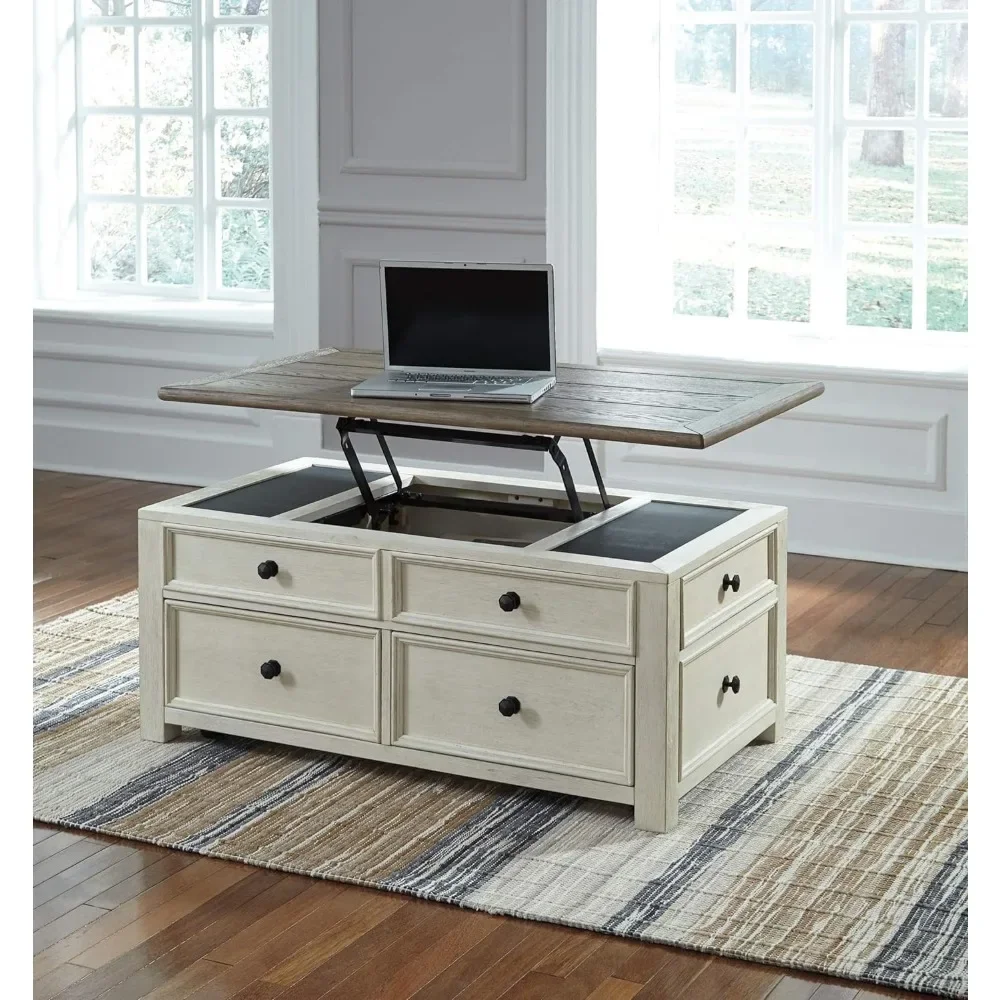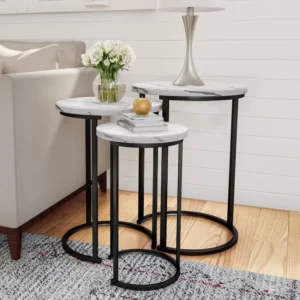What Are Functional Lift Top Coffee Tables? The Modern Home Essential
Functional lift top coffee tables represent a clever evolution in home furniture design, combining the classic appeal of a traditional coffee table with innovative mechanical functionality. Unlike standard coffee tables that offer only a fixed surface, lift top models feature a portion of the tabletop that can be raised and extended, transforming from a regular-height surface into an elevated platform with a simple motion.
These ingenious pieces have steadily grown in popularity since their introduction to the mainstream furniture market. What began as a niche product has evolved into a sought-after solution for modern homes where space optimization and versatility are increasingly valued. The fundamental appeal lies in their dual-purpose nature: when closed, they serve as an aesthetic centerpiece for your living room, displaying decor and holding beverages; when opened, they convert into functional workspaces or dining surfaces at a comfortable height.
The rising popularity of lift top coffee tables directly correlates with changing lifestyle patterns in contemporary homes. As living spaces become smaller and more multi-functional, particularly in urban environments, furniture that can adapt to different needs becomes invaluable. The recent surge in remote work has further accelerated demand, as many homeowners seek ways to create temporary workspaces without dedicating permanent areas to home offices.
Understanding the fundamental aspects of coffee tables provides valuable context before exploring these specialized lift-top variations. The transformation potential of these pieces goes beyond simple storage—they represent a thoughtful approach to modern living where flexibility and functionality are paramount.
Throughout this guide, we’ll explore the many facets of lift top coffee tables that enhance everyday living, from their diverse benefits and mechanisms to styling considerations and practical advice for finding your perfect match.
5 Game-Changing Benefits That Make Lift Top Tables Worth the Investment
1. Unmatched Versatility for Modern Living
Lift top coffee tables excel in their adaptability to various daily activities. With a simple adjustment, your coffee table transforms into a comfortable work desk for laptops, a convenient dining surface for casual meals, or a crafting station for creative projects. This multi-functionality eliminates the need for separate specialized furniture pieces, making these tables particularly valuable for those who need their spaces to work harder.
2. Space-Saving Solutions for Any Home
In today’s housing market where square footage comes at a premium, lift top coffee tables offer perfect solutions for small spaces. Rather than requiring dedicated areas for working or dining, these tables allow you to temporarily create these spaces when needed and return to normal living room configurations when finished. This adaptability is especially valuable in studio apartments, compact condos, or homes where rooms must serve multiple purposes.
3. Strategic Storage That Reduces Clutter
Most lift top designs incorporate generous multi-purpose storage options beneath their surfaces. These compartments provide ideal hiding spots for everyday items like remote controls, magazines, gaming controllers, and throw blankets. By keeping these necessities close at hand but out of sight, these tables help maintain a cleaner, more organized living space without sacrificing convenience.
4. Ergonomic Advantages for Comfort
The adjustable height feature of lift top tables addresses a common ergonomic challenge in living rooms. Standard coffee tables sit too low for comfortable typing or eating, forcing users to hunch forward—a position that can lead to neck and back strain. Lift top models raise work surfaces to a more natural height (typically 24-30 inches compared to the standard 16-18 inches), promoting better posture during activities that would otherwise be uncomfortable at traditional coffee table height.
5. Enhanced Living Room Functionality
Perhaps the most significant benefit is how these tables revolutionize living room functionality without compromising style. They maintain the aesthetic appeal of a traditional coffee table while quietly housing additional utility. This dual nature means your living room remains visually cohesive and designed for relaxation, while secretly harboring practical functionality for life’s various activities.
Essential Lift Mechanisms Explained: Finding the Right Movement for Your Needs
Understanding the various lift mechanisms available is crucial when selecting a lift top coffee table that will serve you well for years. Each system offers distinct advantages depending on your specific needs and usage patterns.
Spring-Assisted Lift Systems
Spring-assisted mechanisms use tension springs to help elevate and lower the tabletop. These systems provide reliable support and make raising even heavier surfaces relatively effortless.
Pros:
– Generally more affordable than hydraulic options
– Requires no external power source
– Simple design with fewer components that could fail
– Typically supports moderate weight capacity (15-25 pounds on the lifted surface)
Cons:
– May require occasional adjustment as springs wear over time
– Can lose tension gradually with extensive use
– Sometimes lacks the smooth operation of other mechanisms
Gas Lift/Hydraulic Systems
Gas lift systems utilize pneumatic pistons similar to those found in office chairs, providing smooth, controlled movement with minimal effort.
Pros:
– Exceptionally smooth, controlled motion when raising and lowering
– Allows for various height positions rather than just up or down
– Generally quieter than spring mechanisms
– Typically supports heavier loads (up to 35 pounds on raised surface)
– More resistant to wear over time
Cons:
– Higher price point than spring-assisted models
– Gas cylinders may eventually lose pressure after years of use
– Replacement parts can be specialized and sometimes costly
Manual Lift Designs
Manual lift mechanisms rely on user strength and carefully balanced hinges rather than assistance from springs or hydraulics.
Pros:
– Mechanical simplicity means fewer components that could fail
– Often less expensive than assisted lifting mechanisms
– No gradual degradation of lifting assistance
Cons:
– Requires more physical effort to operate
– May not support as much weight on the raised surface
– Can be challenging for users with limited strength
Pneumatic Mechanisms
These advanced systems utilize compressed air for exceptionally smooth, precise movement.
Pros:
– Premium operation with the smoothest lifting action
– Excellent stability in various positions
– Often supports the highest weight capacities (sometimes exceeding 40 pounds)
– Typically the most durable long-term option
Cons:
– Highest price point among lift mechanisms
– More complex system if repairs are needed
When choosing between lift top and fixed top coffee tables, consider how frequently you’ll use the lifting feature and what weight you’ll typically place on the raised surface. For occasional use with lightweight items, spring mechanisms offer good value. For daily use with heavier items like laptops and meals, investing in hydraulic or pneumatic systems often proves worthwhile in the long run.
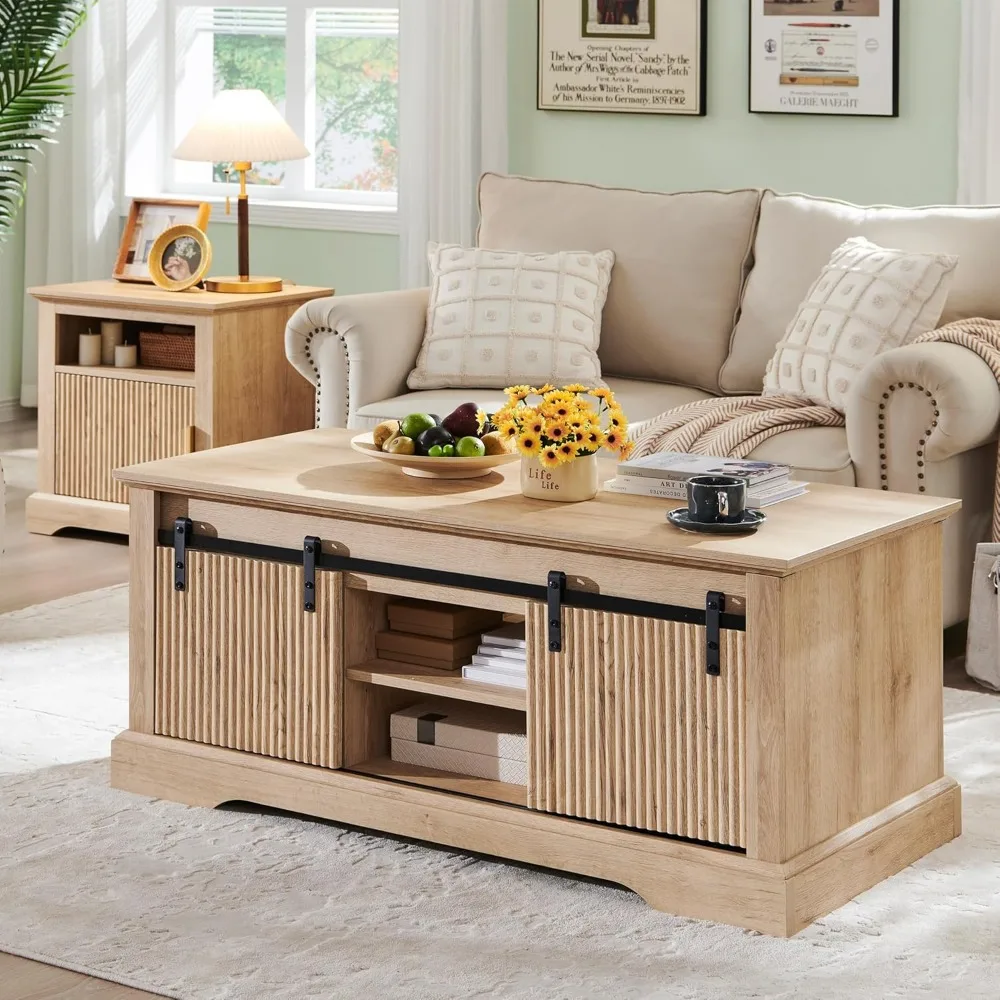
Storage Solutions: Maximizing the Hidden Potential Under Your Table Top
The storage capabilities of lift top coffee tables represent one of their most compelling features, offering smart solutions for keeping living spaces organized without sacrificing style.
Open vs. Enclosed Storage Configurations
Lift top tables generally offer two primary storage approaches, each with distinct advantages:
Open Compartments:
– Provide easy visibility and access to frequently used items
– Allow for decorative display of books, magazines, and attractive storage baskets
– Simplify quick cleanup when company arrives
– Offer better airflow for items that shouldn’t be in completely enclosed spaces
Enclosed Storage:
– Completely conceals clutter for a cleaner overall appearance
– Protects contents from dust accumulation
– Provides more security for items you prefer to keep private
– Often includes organizational features like dividers or smaller compartments
Strategic Organization Systems
Many premium lift top designs incorporate thoughtful organizational elements that enhance their storage potential:
- Divided Sections: Partitioned areas prevent smaller items from getting lost and keep categories separate (electronics in one section, reading materials in another)
- Drawer Configurations: Some models feature additional pull-out drawers below the main compartment for layered storage options
- Hidden Compartments: Secret storage areas behind false panels provide secure spaces for valuables or rarely used items
- Adjustable Dividers: Removable separators allow customization based on changing storage needs
These storage features make lift top tables particularly valuable for revolutionizing home office setups where work materials need to be readily accessible but out of sight when not in use.
Maximizing Storage Efficiency
To get the most from your table’s storage capacity:
- Use slim storage containers that maximize vertical space
- Implement a “frequency of use” organization system, with most-needed items in easily accessible areas
- Consider cable management solutions for electronic charging stations
- Rotate seasonal items to maintain relevant access to what you currently need
The right lift top coffee table from our mid-century modern collection can transform your living room from a cluttered gathering space to an organized, multi-functional area that supports your lifestyle while maintaining clean aesthetic lines.
Material Matters: Durability, Aesthetics, and Maintenance Considerations
The materials used in lift top coffee tables significantly impact not only their appearance but also their durability, weight, and maintenance requirements. Understanding these differences helps ensure you select a table that will maintain its beauty and functionality for years to come.
Solid Wood Options
Solid wood coffee tables remain among the most popular choices for their natural beauty and longevity.
Oak:
– Extremely durable with prominent grain patterns
– Resistant to water damage and daily wear
– Typically heavier, providing stability for lift mechanisms
– Requires occasional polishing and protection from direct sunlight
Walnut:
– Prized for rich, dark tones that develop character over time
– Natural strength makes it ideal for frequently used mechanisms
– Moderately resistant to scratches and dents
– Our walnut coffee tables showcase the material’s elegant aesthetic and structural integrity
Maple:
– Light, consistent coloration with subtle grain
– Exceptionally hard and resistant to abrasion
– Takes finishes extremely well
– Slightly more prone to color changes from UV exposure
Cherry:
– Distinctive reddish hue that deepens beautifully with age
– Moderately hard with good durability
– Requires more protection from scratches than harder woods
– Premium appearance that elevates living room aesthetics
Engineered Wood and MDF
Engineered options offer good value and consistent performance:
- More resistant to warping and environmental changes than solid wood
- Generally lighter weight, which may affect stability
- Available in virtually unlimited finishes and styles
- Typically more affordable than solid wood alternatives
- Requires careful protection from moisture to prevent swelling
Metal Components
Metal elements contribute both aesthetics and functionality:
- Steel frames provide exceptional stability for lift mechanisms
- Aluminum components reduce overall weight while maintaining strength
- Brass or copper accents add distinctive design elements
- Metal legs offer slim profiles that create visual spaciousness
- Generally require minimal maintenance beyond occasional dusting
Glass Elements
Glass features add contemporary flair and practical benefits:
- Creates visual lightness in smaller spaces
- Highly resistant to staining and easy to clean
- Available in clear, frosted, or tinted variations
- More susceptible to fingerprints and requires frequent cleaning
- May raise safety concerns in households with children
Mixed Material Designs
Contemporary tables often combine materials for optimal performance:
- Wood frames with metal lift mechanisms optimize durability
- Glass inserts with wooden borders balance aesthetics and practicality
- Stone or concrete elements add weight and stability to bases
- Fabric or leather accents introduce textural interest
When evaluating materials, consider both immediate appearance and long-term performance. Quality construction in high-stress areas (particularly around lift mechanisms and hinges) proves especially important for maintaining functionality over years of use. Premium materials may command higher prices initially but often deliver superior value through extended longevity and sustained performance.
Perfect Proportions: Sizing Your Lift Top Table for Your Space
Selecting the right size lift top coffee table is crucial for both functionality and visual harmony in your living space. Unlike standard coffee tables, lift top models require additional clearance considerations to accommodate their extended height when raised.
Standard Dimensions and Room Relationships
Coffee tables typically follow these general sizing guidelines:
- Length: Ideally 1/2 to 2/3 the length of your sofa
- Width: Typically between 22-30 inches to provide adequate surface area
- Height (closed position): Standard height ranges from 16-18 inches
- Height (raised position): Extended height generally reaches 24-30 inches
For rooms with limited square footage, our small coffee tables offer compact solutions without sacrificing functionality. Conversely, larger coffee tables work well in spacious rooms where they can serve as a substantial focal point without overcrowding the space.
Critical Clearance Considerations
Lift top tables require thoughtful placement to function properly:
- Allow 14-18 inches between the table edge and seating for comfortable leg room
- Ensure at least 24-30 inches of clearance above the table to accommodate the raised height
- Consider traffic patterns with a minimum 30-inch pathway around the table
- Verify that nearby furniture won’t obstruct the lifting mechanism’s movement
Weight and Stability Factors
Size directly impacts stability considerations:
- Larger tables generally offer greater stability when the top is raised
- Consider the base design—wider bases provide more support for extended tops
- Weight distribution becomes more critical as size increases
- Heavier materials like solid wood provide natural stability for larger lift mechanisms
Proper sizing ensures both aesthetic harmony and functional practicality. A perfectly proportioned lift top table should feel substantial enough to anchor your seating arrangement while remaining appropriately scaled to surrounding furniture pieces.
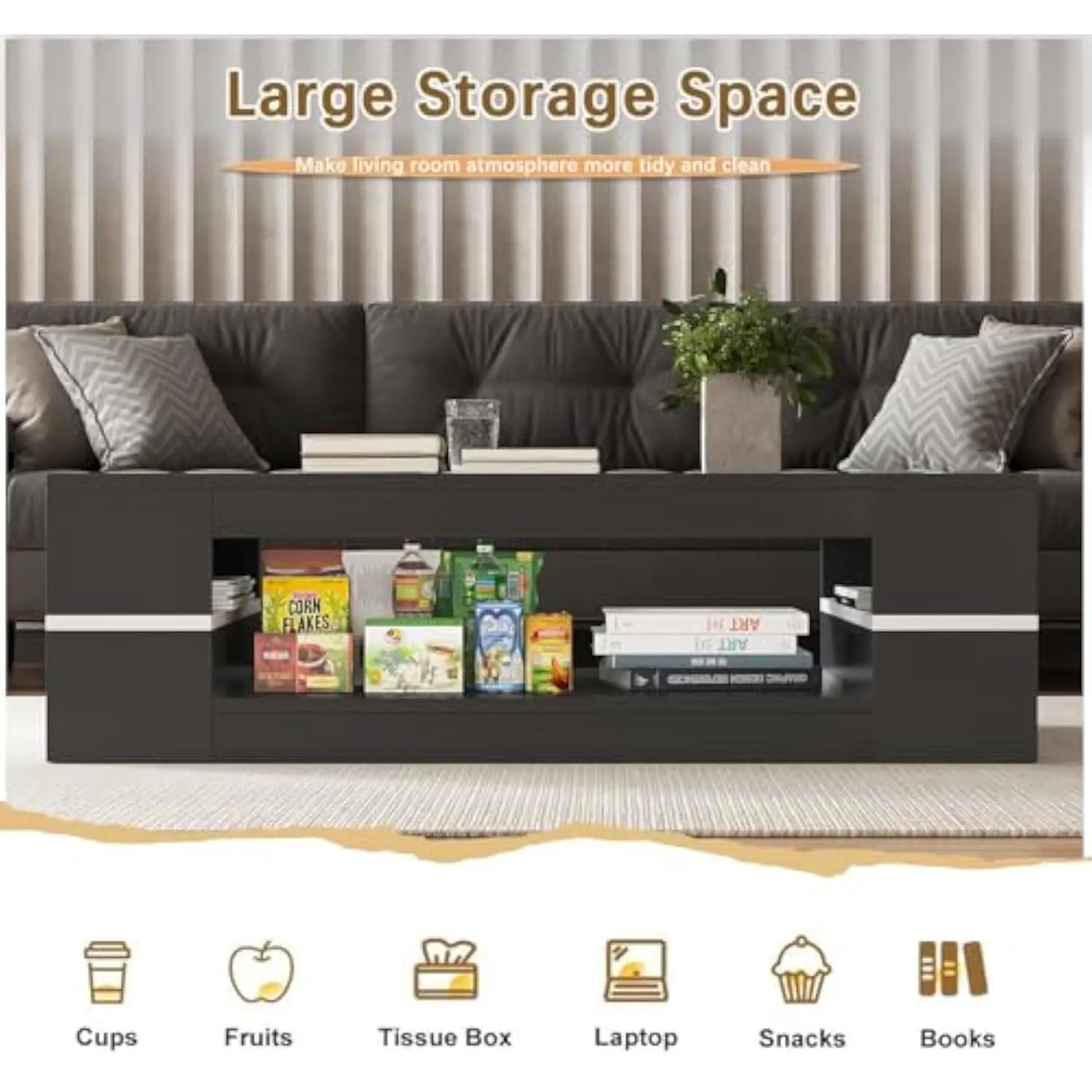
Style Guide: Finding the Perfect Lift Top Design for Your Décor
The aesthetic appeal of your lift top coffee table plays a crucial role in defining your living space. While functionality drives many purchasing decisions, finding a style that harmonizes with your existing décor ensures the table enhances your room’s overall design.
Mid-Century Modern Lift Top Designs
Mid-century lift top coffee tables remain enduringly popular for their timeless appeal. These pieces feature:
- Clean, organic lines with minimal ornamentation
- Tapered legs that create visual lightness
- Warm wood tones (particularly walnut and teak)
- Geometric shapes with soft edges
- Functional simplicity that conceals complex mechanisms
Our mid-century modern coffee table collection showcases these design principles while incorporating modern lift functionality.
Industrial Style Elements
Industrial lift top tables bring rugged character to living spaces through:
- Metal frameworks with visible hardware
- Distressed wood surfaces that showcase natural imperfections
- Raw or blackened steel components
- Mechanical elements that celebrate rather than conceal function
- Substantial proportions that emphasize durability
Farmhouse and Rustic Aesthetics
Rustic lift top tables create warm, inviting atmospheres with:
- Distressed finishes that suggest history and character
- Substantial wooden components with visible grain
- Whitewashed or natural finishes
- X-braced supports or turned legs
- Hardware with antiqued brass or iron finishes
Contemporary and Minimalist Options
Modern lift top coffee table designs focus on sleek simplicity:
- High-gloss finishes in neutral colors
- Hidden hardware that maintains clean lines
- Mixed materials like glass, metal, and engineered wood
- Asymmetrical or unexpected shapes
- Streamlined silhouettes with precise angles
Traditional Design Elements
Traditional lift top tables offer timeless elegance through:
- Rich wood tones with polished finishes
- Decorative edge detailing and subtle ornamentation
- Curved or cabriole legs
- Symmetrical proportions and balanced design
- Warm, inviting surfaces often in cherry or mahogany
Color Selection Strategies
When selecting a color palette:
- Consider your existing furniture as the primary reference point
- Use wood tones that complement rather than exactly match other pieces
- For painted finishes, neutral colors offer the most versatility
- Bold colors can serve as statement pieces but may limit future décor changes
- Two-tone designs can bridge different elements in your space
The best lift top coffee tables seamlessly integrate into your existing décor while providing the functional benefits that make them so valuable. By selecting a style that aligns with your overall design approach, you’ll ensure this hardworking piece enhances both the function and beauty of your living space.
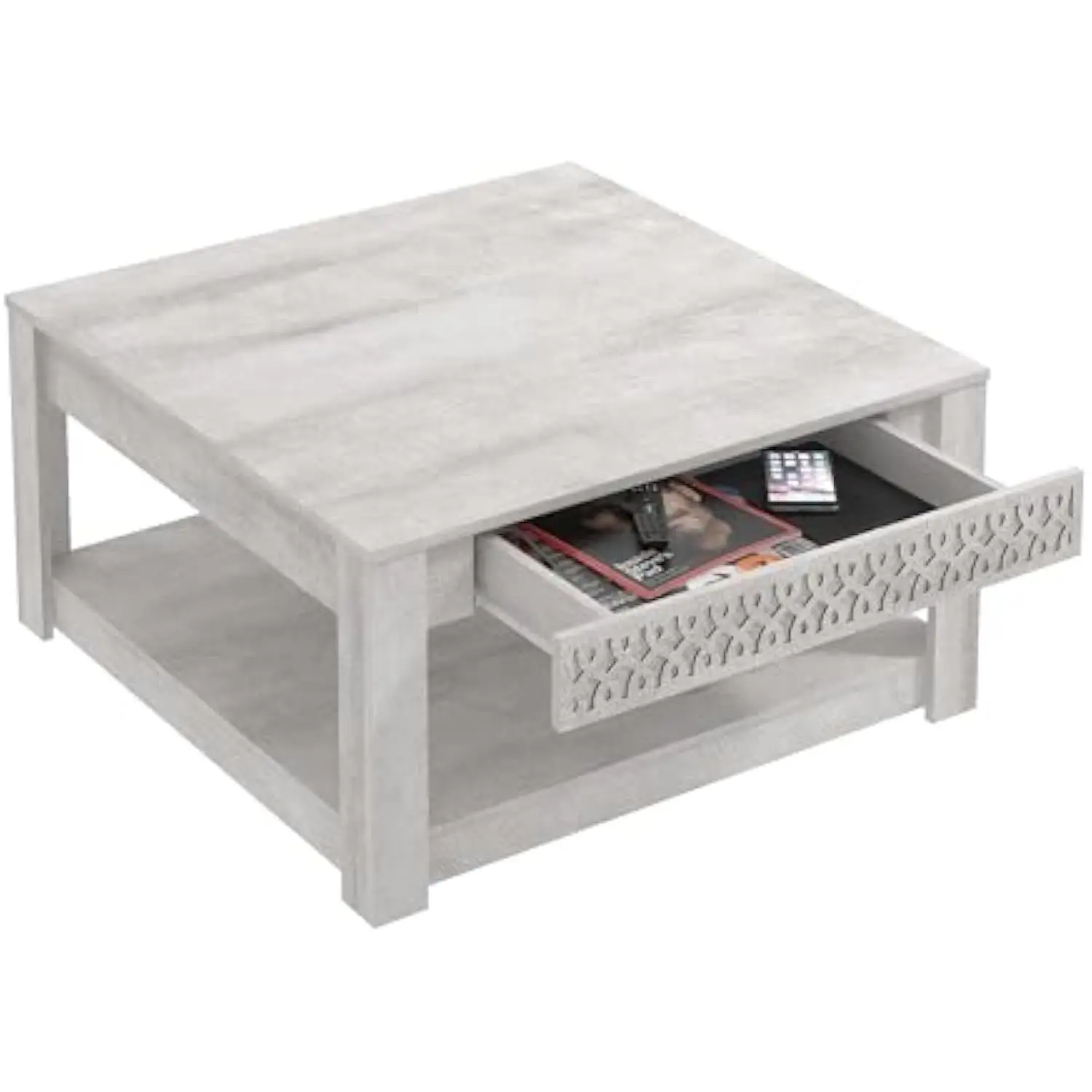
Smart Features: Beyond the Lift Mechanism
Modern lift top coffee tables have evolved far beyond simple raising mechanisms, incorporating innovative features that further enhance their functionality in today’s technology-driven homes.
Integrated Power Solutions
- Built-in USB Ports: Conveniently placed charging stations eliminate the need to reach for distant wall outlets
- AC Power Outlets: Full-sized outlets accommodate laptop chargers and other larger plugs
- Wireless Charging Pads: Qi-compatible surfaces allow for cordless charging of compatible smartphones and devices
- Cable Management Systems: Hidden channels and clips keep cords organized and out of sight
Enhanced Functionality Features
- Adjustable Height Settings: Multi-position stops allow for customized height settings beyond simple up/down positions
- Swivel or Rotating Tops: Surfaces that rotate for flexible use from different seating positions
- Extendable Sides: Additional surfaces that pull out horizontally to expand the usable area
- Convertible Components: Sections that transform into different configurations based on needs
Comfort and Convenience Elements
- Integrated Lighting: Subtle LED lighting inside storage compartments or as ambient features
- Temperature-Controlled Compartments: Insulated sections that keep beverages cool or food warm
- Remote Control Operation: Electronic lift mechanisms that operate at the touch of a button
- Voice Control Compatibility: Integration with smart home systems for hands-free operation
Technology Integration Possibilities
- Bluetooth Speakers: Built-in audio systems that connect to your devices
- Smart Home Hubs: Integration points for controlling other connected devices
- Digital Display Panels: Information screens built into the surface for weather, time, or other data
- Device Docking Stations: Dedicated spaces designed to hold tablets or phones at viewable angles
When considering these advanced features, it’s important to evaluate how different solid wood materials accommodate technological components. Certain woods provide better heat dissipation for electronics, while others may require special treatment to prevent damage from occasional spills near charging areas.
The evolution toward smarter furniture reflects our increasingly connected lifestyles. While not every technological feature may prove necessary for your specific needs, thoughtfully selected smart elements can significantly enhance how your lift top coffee table serves your daily routine.
Budget Considerations: Finding Quality at Every Price Point
Navigating the price spectrum for lift top coffee tables requires understanding what drives cost differences and where to prioritize your investment for maximum value.
Entry-Level Options ($150-$350)
At this price point, expect:
– Engineered wood construction with laminate or veneer finishes
– Basic spring-assisted lift mechanisms
– Simplified storage configurations
– Limited warranty coverage (typically 1 year or less)
– Standard designs with fewer custom details
Quality indicators to look for:
– Reinforced corners and stress points
– Smooth operation of the lift mechanism
– Even finish application without bubbling or peeling
– Stable base design that minimizes wobbling
Mid-Range Selection ($350-$700)
This popular price bracket offers significant quality improvements:
– Higher quality engineered wood or some solid wood components
– More reliable lift mechanisms with smoother operation
– Better weight capacity on raised surfaces
– Enhanced storage configurations with dividers or drawers
– Extended warranty coverage (often 1-3 years)
– More distinctive design elements and finish options
Value-focused features worth the upgrade:
– Hydraulic lift systems instead of basic springs
– Partial solid wood construction in high-wear areas
– Dovetail drawer joints for increased durability
– Reinforced hinges and lifting components
Premium Investment ($700+)
At higher price points, expect substantial quality differences:
– Solid hardwood construction throughout
– Premium hardware with lifetime warranties
– Precision-engineered lift mechanisms
– Exceptional craftsmanship with fine detailing
– Distinctive design elements or custom options
– Extended or lifetime warranties
Long-term value considerations:
– Mechanism quality directly impacts long-term functionality
– Premium materials resist wear and can be refinished
– Timeless designs retain aesthetic appeal despite changing trends
– Superior construction techniques extend usable lifespan
Our rectangular coffee table collection offers options across various price points while maintaining design integrity and functionality.
When balancing budget constraints against quality considerations, prioritize:
1. Mechanism durability (this determines long-term functionality)
2. Construction quality at stress points
3. Material quality in high-wear surfaces
4. Storage features you’ll use daily
5. Aesthetic details and premium finishes
Remember that even moderately priced tables can provide excellent value when well-constructed and thoughtfully designed. Focus on finding the optimal balance between immediate affordability and long-term satisfaction with both function and appearance.
Mid-Century Modern Solid Wood Coffee Tables, Mid-Century Modern Teak Coffee Tables
$879.95 Select options This product has multiple variants. The options may be chosen on the product pageMid-Century Modern Danish Coffee Tables, Mid-Century Modern Oval Coffee Tables, Mid-Century Modern Solid Wood Coffee Tables
$390.05 Select options This product has multiple variants. The options may be chosen on the product pageMid-Century Modern Nesting Side & End Tables, Mid-Century Modern Nesting Table Sets, Mid-Century Modern Round Side & End Tables
Price range: $239.35 through $273.06 Select options This product has multiple variants. The options may be chosen on the product pageMid-Century Modern Coffee & End Table Sets, Mid-Century Modern Coffee Table Sets, Mid-Century Modern Oval Coffee Tables
Price range: $257.48 through $331.04 Select options This product has multiple variants. The options may be chosen on the product pageMid-Century Modern Glass Top Coffee Tables, Mid-Century Modern Glass Top Side & End Tables
$460.58 Select options This product has multiple variants. The options may be chosen on the product pageMid-Century Modern Glass Top Coffee Tables, Mid-Century Modern Vintage Coffee Tables, Mid-Century Modern Vintage Side & End Tables
$725.36 Select options This product has multiple variants. The options may be chosen on the product page
Installation and Maintenance: Keeping Your Lift Top Table in Perfect Working Order
Proper assembly and regular maintenance significantly extend the life and functionality of your lift top coffee table. Following these guidelines helps ensure smooth operation for years to come.
Assembly Considerations
Most lift top tables require some assembly, with complexity varying by design:
– Allow 1-2 hours for typical assembly
– Always read instructions completely before beginning
– Organize hardware by step to avoid confusion
– Enlist a helper for positioning heavy components
– Avoid over-tightening hardware, which can strip wood or damage components
– Ensure the table sits level before completing assembly
Initial Setup Tips
- Test the lifting mechanism slowly several times before adding weight
- Apply a small amount of recommended lubricant to moving parts if specified
- Verify all locking mechanisms engage properly
- Ensure even clearance on all sides of the lifting portion
Regular Maintenance Schedule
Weekly Tasks:
– Dust surfaces with a soft, dry cloth
– Wipe up spills immediately to prevent damage
– Check and tighten any loose hardware
Monthly Tasks:
– Clean wood surfaces with appropriate cleaner (follow manufacturer recommendations)
– Test lift mechanism for smooth operation
– Clean inside storage compartments
– Inspect hinges and lifting components for signs of wear
Biannual Tasks:
– Apply recommended lubricant to moving parts (typically silicone-based)
– Check alignment of all components
– Inspect underside structural elements
– Clean hard-to-reach areas around mechanisms
Weight Management Guidelines
- Observe manufacturer’s weight limits (typically 10-30 pounds on raised surfaces)
- Distribute weight evenly across the raised surface
- Avoid leaning heavily on the extended section
- Never sit on or apply excessive downward force to the raised portion
Troubleshooting Common Issues
Table doesn’t stay raised:
– Check for proper engagement of locking mechanisms
– Inspect gas cylinders or springs for damage
– Verify weight is within recommended limits
Uneven lifting or wobbling:
– Ensure table sits on a level surface
– Check for loose hardware at hinge points
– Inspect for damaged components
Squeaking or sticking:
– Apply appropriate lubricant to moving parts
– Check for debris or obstructions in mechanisms
– Inspect for bent components affecting alignment
These maintenance practices are particularly important for compact coffee tables in small spaces where mechanisms may be under additional stress due to more frequent transformations between configurations.
With proper care, quality lift top coffee tables can maintain their functionality and appearance for many years, making them worthwhile investments in your home’s comfort and versatility.
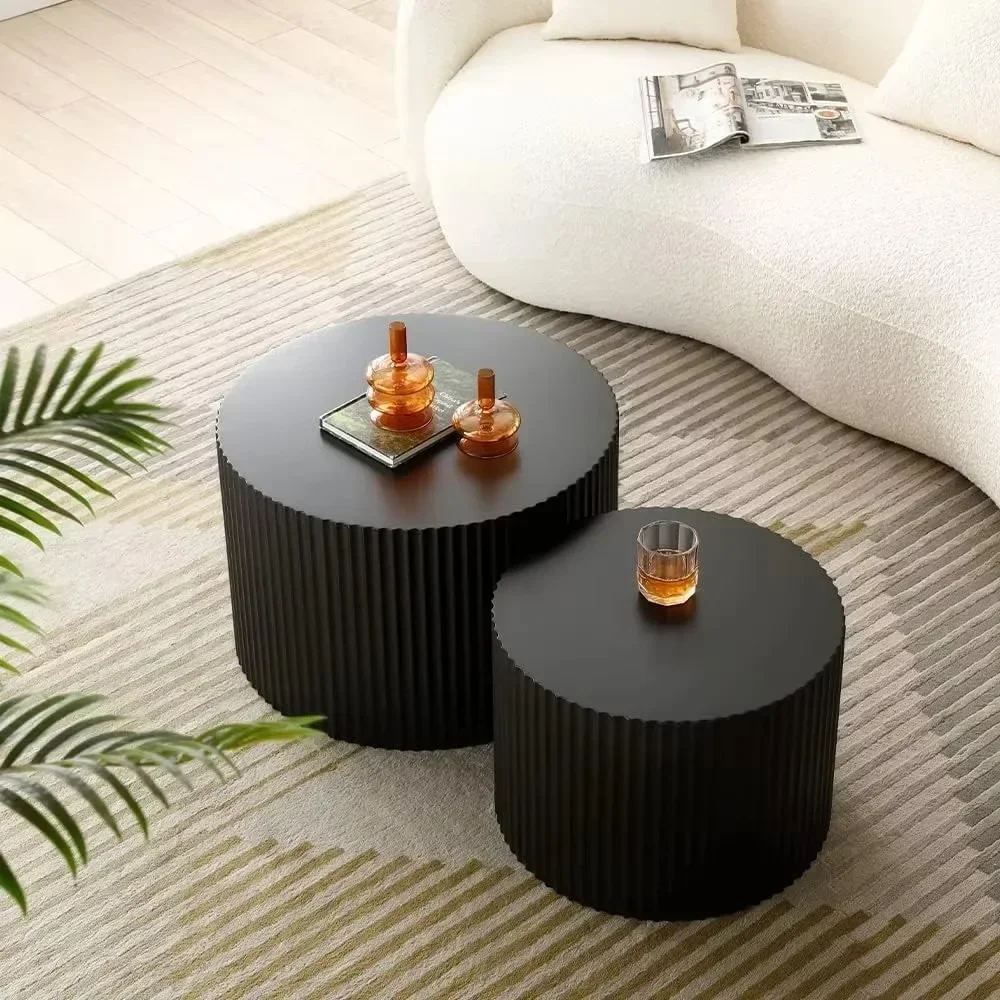
Common Questions About Functional Lift Top Coffee Tables
How much weight can a lift top table support when raised?
Weight capacity varies significantly based on the quality of the mechanism and table construction. Most standard lift top tables can safely support between 10-30 pounds on the raised portion. Premium models with hydraulic or pneumatic systems typically offer higher capacities, sometimes exceeding 40 pounds. Always check the manufacturer’s specifications, as exceeding weight limits can damage the lifting mechanism or create safety hazards.
Do lift mechanisms eventually wear out or break?
Like any mechanical component, lift mechanisms have finite lifespans. However, quality makes a substantial difference in longevity. Basic spring mechanisms typically last 3-5 years with regular use before showing signs of weakening. Higher-quality hydraulic and pneumatic systems can function properly for 8-10 years or longer with proper care. Regular maintenance and observing weight limits significantly extend mechanism life.
Are lift top coffee tables difficult to assemble at home?
Assembly complexity varies widely between models. Most require moderate DIY skills and take approximately 1-2 hours to complete. Premium tables often feature pre-assembled mechanisms, simplifying the process. Having a second person available helps with aligning components and stabilizing the table during critical assembly steps. Following manufacturer instructions precisely is essential for proper functionality.
Can children safely operate the lifting mechanism?
Most lift mechanisms require moderate strength to operate, which naturally prevents very young children from manipulating them. However, pinch points between moving parts pose potential safety concerns. Many newer models incorporate safety features like soft-close mechanisms and finger-gap protection. For households with children, look for tables with locking mechanisms or higher activation force requirements.
How do I fix a table that won’t stay in the raised position?
This common issue typically stems from one of three problems: worn lift mechanisms, damaged locking components, or exceeded weight capacity. For spring-assisted lifts, adjustment of tension may restore function. Hydraulic systems might need cylinder replacement. Some manufacturers offer replacement parts for common wear items, making repair possible without replacing the entire table.
Are replacement parts available if the mechanism breaks?
Availability of replacement parts varies significantly by brand and model. Well-established furniture manufacturers typically stock common replacement components for 5-7 years after model discontinuation. Generic replacement mechanisms are available for some standardized designs. When purchasing, consider brands with established customer service and parts availability as an important factor in long-term value.
For those interested in versatile furniture solutions, our coffee and end table sets offer coordinated options that complement lift top coffee tables while enhancing overall living room functionality.
Transforming Your Space: Creative Ways to Maximize Your Lift Top Table
Innovative lift top coffee tables offer far more versatility than their conventional counterparts. By thinking creatively about their unique capabilities, you can transform your living space in ways that enhance both form and function.
Create a Compact Home Office Hub
Transform your coffee table into a productive workspace without dedicating permanent square footage to a desk:
– Position your laptop at ergonomic height using the raised surface
– Store office supplies in the compartment below for quick access
– Use cable management features to keep charging cords organized
– Tuck a small task chair under a nearby sofa when not in use
– Close everything away instantly when work hours end
Establish a Social Gaming Center
Board games and puzzles find an ideal home on lift top tables:
– Raise the surface to comfortable game-playing height
– Store current games-in-progress safely underneath
– Use the raised position to improve visibility for all players
– Organize game pieces in compartmentalized storage below
– Lower the top to hide unfinished puzzles from pets or children
Design a Flexible Dining Solution
For homes without dedicated dining space, lift top tables provide elegant mealtime solutions:
– Elevate the surface for comfortable dining without hunching
– Store placemats and napkins in the compartment for easy access
– Use the raised height for serving buffet-style when entertaining
– Accommodate unexpected dinner guests without extra furniture
– Return to coffee table height immediately after meals
Create a Crafting and Hobby Station
Artistic pursuits benefit from accessible but concealable workspace:
– Store current projects safely inside when not in use
– Raise the surface to comfortable working height for detail work
– Keep supplies organized in compartments beneath
– Display finished items on the closed surface between sessions
– Protect works-in-progress from dust and damage
For even more flexible surface options, our nesting table sets provide complementary surfaces that can be arranged to support various activities while maintaining design coherence.
The true value of a lift top coffee table lies in its ability to transform according to your immediate needs while maintaining the aesthetic integrity of your living space. By thoughtfully incorporating these versatile pieces into your daily routines, you maximize both their utility and your enjoyment of your home environment.
How to Choose the Perfect Lift Top Coffee Table: Your Decision Guide
Selecting the ideal lift top coffee table requires balancing practical considerations with aesthetic preferences. This step-by-step approach helps narrow your options to find the perfect match for your needs.
Step 1: Assess Your Primary Usage Needs
Begin by identifying how you’ll most frequently use the table:
– Will it primarily serve as a workspace? Prioritize larger surfaces and sturdy mechanisms.
– Mainly for casual dining? Look for easy-to-clean materials and stable lifting.
– Primarily for storage? Focus on compartment configuration and capacity.
– Mostly decorative with occasional lifting? Consider design-forward options with simpler mechanisms.
Step 2: Measure Your Space and Existing Furniture
Take precise measurements to ensure proper fit:
– Measure the area where the table will sit (allow 30-36 inches for traffic paths)
– Note your sofa height (ideal coffee table height is 1-2 inches lower than sofa seat)
– Measure overhead clearance for the raised position (minimum 24 inches needed)
– Consider relationship to surrounding furniture (ideal length is roughly 2/3 your sofa length)
Step 3: Evaluate Storage Requirements
Assess what you need to store and how you’ll access it:
– Make an inventory of items you plan to keep in the table
– Determine if you need divided storage or open compartments
– Consider if items require protection from dust or visibility
– Evaluate how frequently you’ll need to access stored items
Step 4: Select Appropriate Materials
Choose materials that match your lifestyle demands:
– Active households with children: Consider sturdy hardwoods or metal frames
– Design-focused spaces: Explore mixed materials or statement finishes
– Low-maintenance needs: Investigate glass tops or laminates
– Traditional décor: Look to solid woods with classic finishes
Step 5: Match Style to Existing Décor
Find design elements that complement your space:
– Identify your predominant style (mid-century, traditional, industrial, etc.)
– Note existing wood tones or metal finishes to coordinate with
– Consider if you want the table to blend in or serve as a focal point
– Evaluate if your style preference will remain timeless or might change
Step 6: Establish Your Budget Parameters
Set realistic expectations for your investment:
– Quality mechanisms typically start around $250-300
– Solid wood construction generally begins at $500+
– Premium features and materials can push prices over $800
– Consider long-term value rather than just initial cost
Step 7: Research Mechanism Quality and Warranty
Investigate the operational aspects:
– Compare lifting mechanisms (springs, hydraulics, pneumatics)
– Check weight capacities for raised surfaces
– Review warranty terms, particularly for mechanical components
– Read user reviews focusing specifically on mechanism durability
By methodically working through these considerations, you’ll narrow the field to tables that truly meet your needs. Remember that the perfect lift top coffee table balances functionality, aesthetics, and quality construction—creating a piece that will enhance your living space for years to come.
Alternative Solutions: When a Lift Top Coffee Table Isn’t the Right Fit
While lift top coffee tables offer remarkable versatility, they aren’t ideal for every living situation. Understanding alternative options helps ensure you select the furniture that truly best serves your specific needs.
C-Tables and Side Tables as Alternatives
These smaller, mobile tables often provide better solutions when:
– You primarily need occasional work surfaces rather than permanent ones
– Your living room layout doesn’t accommodate a central coffee table
– You prefer minimalist aesthetics with less substantial furniture
– You need surfaces that can be easily moved to different seating areas
C-tables specifically slide partially under sofas, bringing their surfaces directly over your lap—often more convenient than a central lifted surface for laptop work or dining.
Nested Coffee Tables for Flexible Surfaces
Nesting coffee tables provide multiple surfaces that can be:
– Arranged in various configurations based on immediate needs
– Separated to serve different seating areas simultaneously
– Compacted when not in use to maximize floor space
– Deployed individually for different purposes (drinks on one, books on another)
The main advantage over lift tops is the ability to create multiple independent surfaces rather than one raised area.
Ottoman Coffee Tables for Different Functionality
Ottoman tables excel when:
– Soft surfaces are preferred over hard ones
– Extra seating is frequently needed
– You prioritize comfort (putting feet up) over work surfaces
– Storage needs focus on larger items like blankets
– Child safety is a primary concern
Many ottoman tables feature tops that flip over to reveal hard surfaces, offering some of the functionality of lift tops with different aesthetic and comfort considerations.
Traditional Coffee Tables with Alternative Storage
Standard coffee tables with thoughtful storage features might work better when:
– You rarely need raised work surfaces
– Your storage needs are minimal or primarily decorative
– Table stability is a significant concern
– Budget constraints make specialized mechanisms impractical
– You prefer classic, unchanging furniture pieces
Many traditional designs now incorporate drawers, shelves, or hidden compartments without the complexity of lifting mechanisms.
Hybrid Approaches for Maximum Flexibility
Consider combining furniture elements for optimized functionality:
– A standard coffee table paired with a quality laptop stand
– Traditional coffee table with a few strategic side tables
– Coffee table plus ottoman with tray for occasional elevated surfaces
– Wall-mounted drop-leaf tables combined with smaller coffee tables
These combinations often provide greater flexibility than any single piece while allowing more precise customization to your specific needs.
By honestly assessing how you’ll actually use your living space—rather than how you imagine you might use it—you can select the furniture solution that genuinely enhances your daily life. Sometimes the perfect answer isn’t the most complex or feature-rich option, but rather the one that most elegantly solves your particular challenges.

